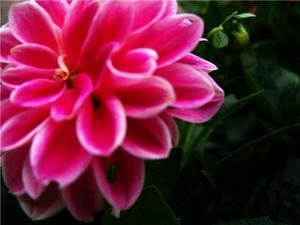Aromatherapy has been around for thousands of years. The practice continues despite extensive scientific research. The benefit of discovering a plant, that grows in the wild, can heal or prevent illness just isn’t a priority. The lack of monetary gain for the large companies or research centers is most likely the culprit.
The fact that the people experience personal success using essential oils is reason enough to keep the practice alive. Personally I love the idea of a bubble bath improving memory, curing insomnia with an herb or cleaning the kitchen with a cleanser that increases my energy levels. The benefits are real. The proof really is in the pudding.
While people have been using the oils for centuries, the modern version got a boost when a French chemist burnt himself and plunged his arm into a vat of lavender oil. This man must have been a little clumsy, says he reported faster healing and less scarring. Sounds like it wasn’t the first time he had burned himself severely.
Essential oils work on two levels, aroma and actual physical contact. The scent of certain plants affects the brain and the emotions. Depending on the oil used, different moods can be influenced. Specific results can also be achieved by applying directly to the skin. ( but use caution and follow directions, some oils in their pure form should not come into direct contact with the skin)
Certain oils can stimulate lymphatic drainage, some boost the immune system’s ability to ward off infections and others have antibacterial properties. This all makes sense to me. It seems while we are out searching for artificial cures, the answer is right under our noses.
From those with minor concerns or emotional stress to those battling cancer or suffering from dementia can all benefit from aromatherapy in some form or another.
There are several ways to administer an Aromatherapy Treatment.
Bath. You can make a luxuriously fragrant aromatherapy bath by filling the tub with water, and then add 3-8 drops of the essential oil or oils, you can use more than one, of your choice. Swish the water around to blend before getting into the tub. Simply inhale the fragrance rising from the water.
Note: do not use more than one drop of basil, peppermint, or thyme oil in a bath and do not use these oils together.
Compress. To prepare a compress, disperse up to 5 drops of oil in 6 cups of water. The water can be warm or cool, depending on the condition you are treating. Dip a clean cotton cloth into the water and wring it out so that it is not dripping and apply to the affected area. Leave in place for 10-15 minutes.
Diffusion. Diffusing essential oils into the air is a popular possibility. Use a special aromatherapy lamp or diffuser made just for this purpose. Or, put 1-10 drops of essential oil into a vaporizer with warm water and let it fill the room with the aroma.
Inhalant. Place a drop of essential oil on a handkerchief and inhale the aroma as you like. This is a practice often used by people going for long medical procedures, like MRI’s, or if anxiety hits because of plane travel. Use a calming oil and the body will relax.
Massage Oil. For hands on aromatherapy, add essential oil to massage oil. Blend the 5 drops of fragrant oil into a tablespoon of light base oil such as almond oil
Steam inhalation treatment. This is a very useful treatment for opening up congested sinuses and lung passages, discharge mucus and help you to breathe easier. Fill your sink or a pot with very hot water. Place 4-5 drops of the oil into the water and drape a towel over your head, lean over the water and inhale the steam.
Burning oils is not recommended for the unhealthy fumes and soot produced. Whatever sort of treatment you chose; remember a little goes a long way. Essential oils are highly concentrated. Keep your bottles in a cool, dark place away from children and pets.
